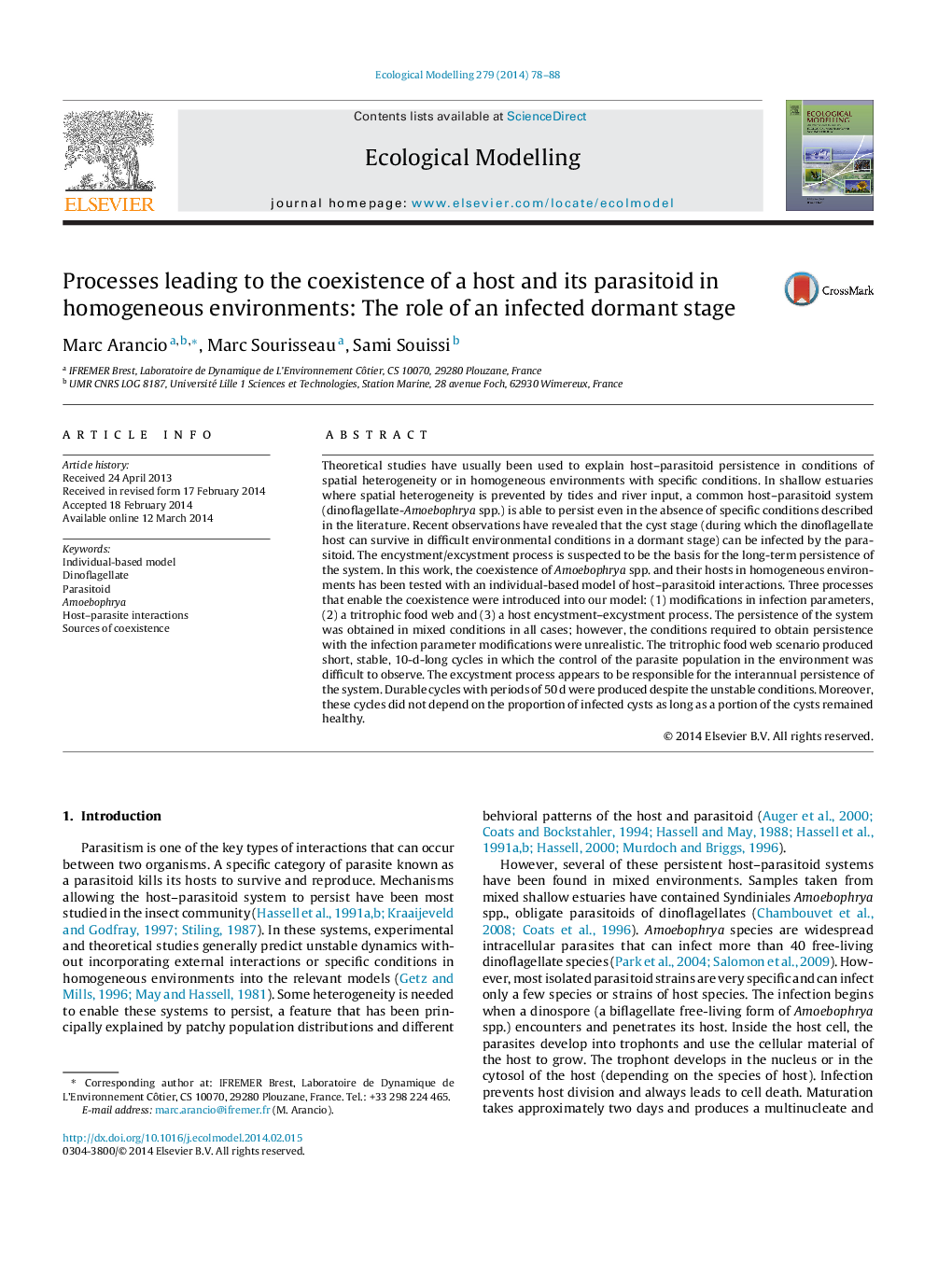| کد مقاله | کد نشریه | سال انتشار | مقاله انگلیسی | نسخه تمام متن |
|---|---|---|---|---|
| 4375976 | 1617467 | 2014 | 11 صفحه PDF | دانلود رایگان |
• Marine host–parasitoid study with Amoebophrya spp. and dinoflagellate hosts.
• The IBM model allows the introduction of a maturation time in host–parasitoid dynamics and gives good simulation of short in vitro dynamics.
• Short-term coexistence and oscillation in this ecosystem can be explained by a parasitoid population control.
• Interannual persistence in homogeneous environment of host–parasitoid system simulated with the excystment process.
Theoretical studies have usually been used to explain host–parasitoid persistence in conditions of spatial heterogeneity or in homogeneous environments with specific conditions. In shallow estuaries where spatial heterogeneity is prevented by tides and river input, a common host–parasitoid system (dinoflagellate-Amoebophrya spp.) is able to persist even in the absence of specific conditions described in the literature. Recent observations have revealed that the cyst stage (during which the dinoflagellate host can survive in difficult environmental conditions in a dormant stage) can be infected by the parasitoid. The encystment/excystment process is suspected to be the basis for the long-term persistence of the system. In this work, the coexistence of Amoebophrya spp. and their hosts in homogeneous environments has been tested with an individual-based model of host–parasitoid interactions. Three processes that enable the coexistence were introduced into our model: (1) modifications in infection parameters, (2) a tritrophic food web and (3) a host encystment–excystment process. The persistence of the system was obtained in mixed conditions in all cases; however, the conditions required to obtain persistence with the infection parameter modifications were unrealistic. The tritrophic food web scenario produced short, stable, 10-d-long cycles in which the control of the parasite population in the environment was difficult to observe. The excystment process appears to be responsible for the interannual persistence of the system. Durable cycles with periods of 50 d were produced despite the unstable conditions. Moreover, these cycles did not depend on the proportion of infected cysts as long as a portion of the cysts remained healthy.
Journal: Ecological Modelling - Volume 279, 10 May 2014, Pages 78–88
